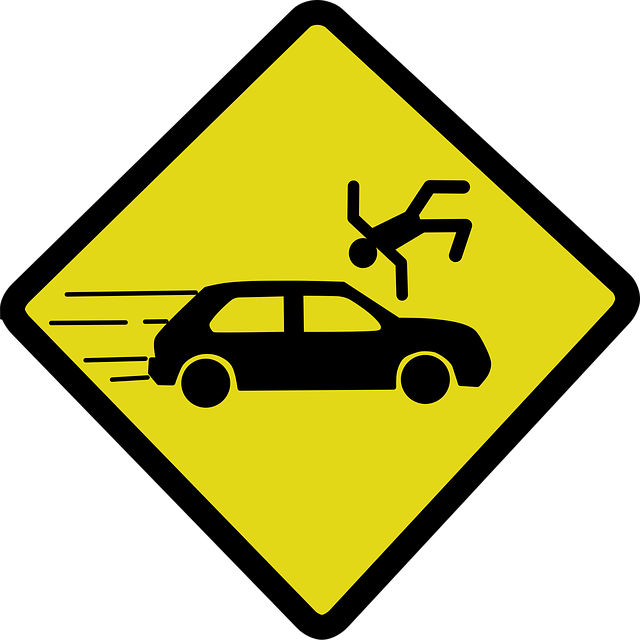Collision coverage protects drivers from financial loss after accidents, covering vehicle repairs and replacement costs regardless of fault. It offers comprehensive protection against direct and non-direct collisions, with a four-step claims process. Optimal plan selection involves evaluating needs, understanding deductibles, and considering exclusions to ensure seamless protection for individual driving habits and scenarios like weather-related incidents or mechanical failures. Prompt reporting and communication streamline the claims process.
“Looking to safeguard your vehicle against unexpected events? Discover the power of Full Collision Coverage Plans, a comprehensive solution designed to protect you on the road. This guide explores the intricacies of collision coverage, highlighting its benefits and how it differs from other auto insurance policies. From understanding common collision scenarios to simplifying the claims process, we’ll break down this essential protection step by step. Find out why choosing the right plan is crucial for peace of mind.”
Understanding Full Collision Coverage

Collision coverage is a type of auto insurance designed to protect policyholders from financial loss in the event of a car accident, where their vehicle suffers significant damage or is declared a total loss. It provides comprehensive protection by covering not only the cost of repairs but also replacing the vehicle if necessary. This type of coverage is especially valuable for drivers who rely on their cars as primary modes of transportation and cannot afford to be without them for extended periods due to repairs.
Understanding full collision coverage involves grasping that it kicks in when you’re at fault for an accident. It will pay for damages to both your vehicle and the other driver’s, up to the policy limits. This includes costs like parts replacement, body shop labor, and even rental car fees while your vehicle is being repaired or replaced. By offering this type of protection, collision coverage ensures drivers can stay on the road without facing unexpected financial burdens after a collision.
Benefits of Comprehensive Protection

Comprehensive collision coverage offers a safety net for drivers, providing protection against unforeseen accidents and their financial repercussions. Unlike liability-only plans that cover damage to others’ vehicles and medical expenses, full collision coverage includes repair or replacement of your own vehicle, even if it’s deemed at fault in the incident. This means you’re shielded from high deductibles and unexpected out-of-pocket expenses associated with accident repairs.
By opting for comprehensive collision protection, drivers gain peace of mind knowing they’re prepared for any eventuality on the road. This coverage can be especially beneficial for those who drive frequently, own older vehicles with lower resale value, or live in areas prone to natural disasters that could damage their cars.
Types of Collision Events Covered

Collision coverage plans are designed to protect vehicle owners from unexpected financial burdens in the event of a collision. These policies typically cover a range of incident types, ensuring comprehensive protection for the insured. The first and most common type of collision event is a direct impact, where your vehicle collides with another object or vehicle. This can include accidents involving other cars, trees, poles, or even curbs.
Additionally, many collision coverage plans extend protection to encompass what’s known as “non-direct” collisions. These incidents involve scenarios like sliding off the road due to icy conditions, hitting a fixed object like a guardrail, or even rolling over. Such events can be just as damaging and costly as direct impacts, making this aspect of collision coverage an essential part of any comprehensive auto insurance policy.
How Does It Work? A Step-by-Step Guide

Collision coverage is a type of automotive insurance that pays for repairs or replacement of your vehicle if it’s damaged in a collision, regardless of who’s at fault. Here’s how it works, step by step:
1. Incident Occurs: You’re involved in a car accident. Whether it’s a fender bender or a more severe crash, the outcome can be costly repairs or even a total loss.
2. File a Claim: After the incident, you’ll need to notify your insurance company. They’ll guide you through the process of filing a claim, which includes providing them with details about the accident and any damages to your vehicle.
3. Assessment and Repair: An adjuster will assess the damage to your vehicle. If approved, your insurance company will either pay for the repairs directly to a repair shop or issue you a check to cover the costs.
4. Coverage Limits: Collision coverage has limits, so be sure to understand your policy’s deductibles and coverage amounts. These determine how much you’ll need to pay out of pocket before insurance covers the rest.
Comparison with Other Auto Insurance Policies

Collision coverage is a specific type of auto insurance that sets it apart from other policies. Unlike comprehensive or liability-only plans, collision insurance is designed to protect against damages resulting from direct accidents, regardless of fault. This means if you’re in a fender bender or rear-end collision, your collision coverage will help cover the repair or replacement costs for your vehicle.
When compared with other auto insurance policies, collision coverage offers a more comprehensive protection shield. While liability insurance protects you against claims from third parties for damages caused to their property or injuries, collision coverage focuses on your vehicle’s repairs. This distinction is crucial, especially for drivers who value peace of mind knowing their vehicles are protected in case of an accident, regardless of the circumstances.
Selecting the Right Plan for Your Needs

Selecting the right collision coverage plan is a crucial step in ensuring you’re protected on the road. It involves evaluating your specific needs, vehicle type, and driving habits. Different plans offer varying levels of protection, from comprehensive coverage that includes accidents not related to weather or human error, to more tailored options focusing on specific concerns like mechanical failures or roadside assistance.
When choosing a plan, consider factors like deductibles—the amount you pay out-of-pocket before insurance kicks in—and the scope of coverage. Higher deductibles often mean lower premiums, but it’s essential to balance this with the potential financial burden of an accident. Additionally, review exclusions and limitations to understand what’s covered and what isn’t, ensuring your Collision Coverage aligns with your lifestyle and driving needs.
Claims Process and Common Scenarios

When it comes to a collision coverage claims process, understanding the steps involved can help ease any anxiety during an already stressful situation. First, after a covered accident, you’ll notify your insurance provider as soon as possible. This typically involves calling or logging into your account online. Then, provide them with details about the incident, including dates, locations, and a brief description of what happened. Collision coverage plans require you to report any damage to your vehicle immediately.
Common scenarios during claims include providing police reports if applicable, gathering evidence like photographs, and obtaining estimates from trusted repair shops. Your insurance company may even have a network of preferred or pre-approved mechanics. Throughout the process, stay in communication with your agent or adjuster to ensure all necessary paperwork is submitted accurately and promptly. This transparency helps streamline the claims process and facilitates a quicker resolution.
